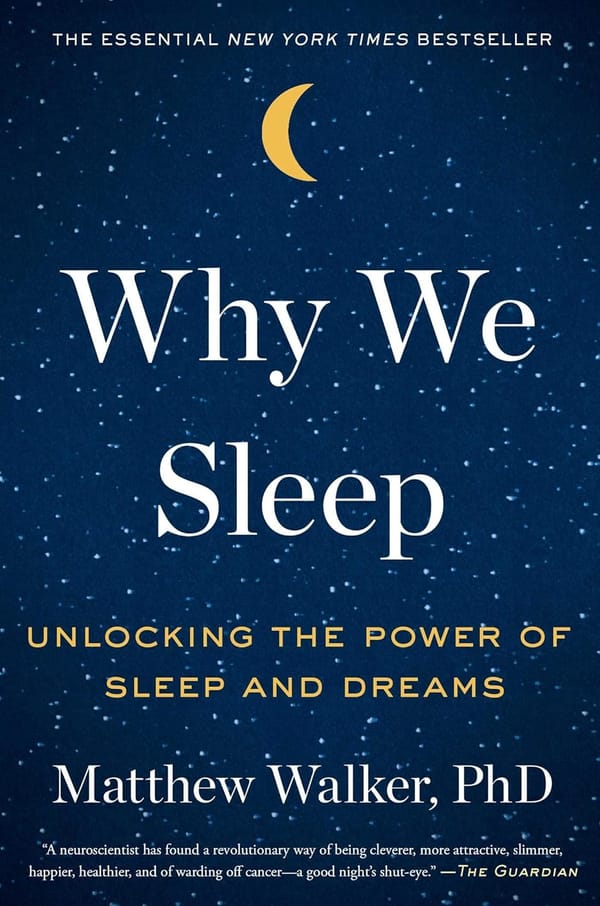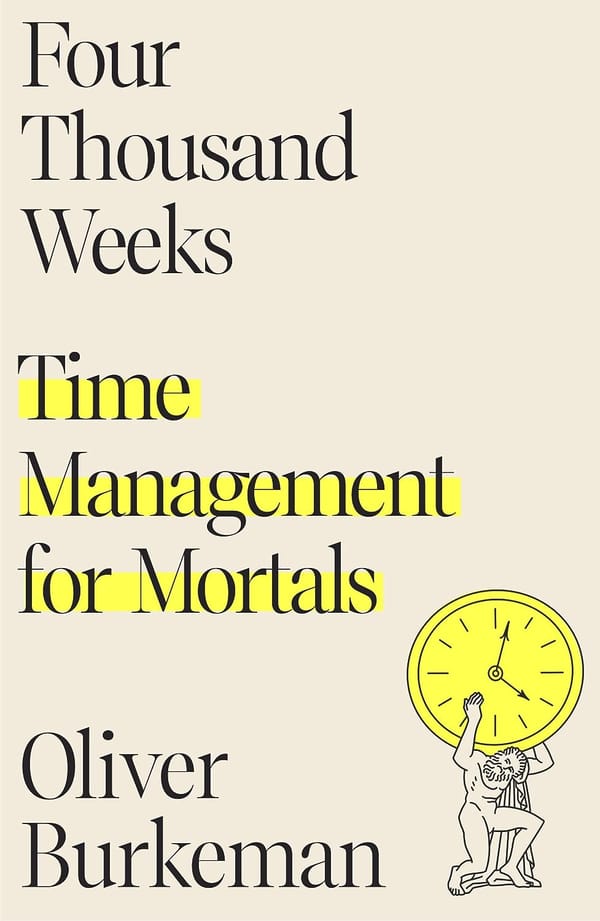Influence - Book Notes
If you enjoyed my review, consider supporting me by using the affiliate links below to purchase the book. Your kindness fuels my passion for sharing captivating reads with you!
🚀 The Book in 3 Sentences
- "Influence" explores the psychology behind human decision-making and the art of persuasion through six key principles: reciprocation, commitment and consistency, social proof, liking, authority, and scarcity.
- Cialdini reveals how these principles are deeply ingrained in human behavior, influencing our choices in various contexts, from everyday interactions to marketing strategies.
- The book serves as a comprehensive guide to understanding and navigating the subtle and powerful forces that shape human behavior in the realm of influence.
👱 Who Should Read it?
This book is a must-read for everyone, as we encounter influence in myriad forms daily. Whether you're navigating personal relationships or fine-tuning your sales tactics, "Influence" equips you with invaluable insights to discern and counteract the subtle strategies employed by those seeking to sway your decisions.
🍀 How the Book Changed Me
Personally, "Influence" heightened my awareness of behavioral triggers, prompting a critical evaluation of my decisions and interactions. Questioning whether external influences played a role has become a reflex, empowering me to make more informed choices.
✍️ Top 3 Quotes
- "Often we don’t realize that our attitude toward something has been influenced by the number of times we have been exposed to it in the past."
- "Freedoms once granted will not be relinquished without a fight."
- "Since 95 percent of the people are imitators and only 5 percent initiators, people are persuaded more by the actions of others than by any proof we can offer."
🔨 3 Action Points
- Increase Awareness of Reciprocity:
Be mindful of situations where favors, no matter how small, are done for you. Recognize the potential influence of the Rule of Reciprocation and consider whether the favor is genuinely in your interest or if it's a tactic to trigger a sense of indebtedness. - Evaluate Authority Critically:
When confronted with authority figures, titles, or symbols, critically assess their expertise and truthfulness. Consider asking two key questions: Is this authority truly an expert? How truthful can you expect the expert to be in this situation? This helps protect against blindly following misleading authority. - Resist Emotional Pull of Scarcity:
When faced with scarcity tactics, particularly Limited-Number or Deadline tactics, take a step back. Evaluate the actual utility of the item or opportunity being presented. Remind yourself that scarcity doesn't inherently enhance the value of an item, and make decisions based on rational assessment rather than the emotional pull of limited availability.
📗 Summary & Notes
Weapons of Influence
Fixed-Action Patterns
Fixed-action patterns are ingrained responses triggered by specific cues. Analogous to a turkey mother responding to a distinctive sound, humans exhibit predetermined behaviors influenced by certain stimuli.
Automatic Behavior
Human behavior often operates on autopilot, serving as a necessary shortcut in our complex lives. This automatic behavior is a psychological mechanism that allows us to navigate the overwhelming intricacies of daily situations without exhaustive analysis. It's akin to a mental Jujitsu, where minimal effort achieves maximum impact. Examples of automatic behavior abound in various aspects of our lives:
- Expensive = Good: Society often conditions us to believe that expensive goods equate to higher quality. This automatic association can lead us to overvalue products solely based on their price, especially when lacking knowledge about a particular item.
- Compliance - Because: The mere inclusion of the word "because" can trigger automatic compliance. The reason provided may not necessarily add informational value, yet the use of "because" prompts an automatic response.
- Contrast-Misreaction Principle: When two contrasting things are presented consecutively, we tend to perceive the difference between them as more significant than it actually is. For instance, lifting a heavy object immediately after a light one makes the heavy object seem even weightier.
Reciprocation
Rule of Reciprocation
The rule of reciprocation suggests that we are wired to repay what others provide us, fostering a sense of indebtedness. This rule holds tremendous influence, compelling us to return favors even when we may not like the person initiating the exchange. The power of reciprocation extends beyond requested favors, as even unsolicited gifts can trigger this rule.
- Reject-Then-Retreat Technique: Leveraging the reciprocity principle, this technique involves making a large, likely declined request followed by a smaller, more reasonable one. The initial refusal primes individuals to be more receptive to the subsequent, more favorable request. For instance, a salesman may first ask a potential customer to buy an expensive product, expecting refusal, and then present a more affordable option like a cheaper accessory. The customer, having declined the initial costly request, is now more likely to agree to the smaller one.
- Examples: Beggars often employ reciprocation by giving a small gift before seeking a donation. Similarly, free samples in supermarkets capitalize on the rule, creating a sense of obligation to reciprocate by making a purchase.
Commitments and Consistency
Consistency in Commitments
Human beings have an innate desire for consistency in their decisions and actions. Once a commitment is made, there is a psychological pressure to align future behaviors with that commitment. Commitments trigger automatic consistency, offering a mental shortcut to navigate complex situations.
- Foot-in-the-Door Technique: Starting with small, inconsequential commitments and gradually escalating them is a potent strategy. People are more likely to agree to larger commitments once they've committed to smaller, seemingly trivial ones. For instance, a charity may first ask individuals to sign a petition for a noble cause, and later, when approached for a donation, individuals who've committed to the smaller action are more likely to contribute.
- Lowballing: This tactic involves offering an advantage that induces a favorable decision, only to remove the advantage after the decision is made. The individual rationalizes the decision, creating supporting reasons for the commitment. or example, a car salesman may initially offer a vehicle at a lower price, emphasizing its features and benefits. Once the customer decides to buy, the salesman reveals additional costs, like hidden fees or expensive add-ons. Despite the increased overall cost, the customer may proceed with the purchase due to the initial commitment and the perceived value of the car.
Social Proof
Principle of Social Proof
Our tendency to determine correctness by observing others forms the Principle of Social Proof. This automatic behavior influences our perceptions of correct behavior and is often exploited in various contexts. The more people exhibit a particular behavior, the more likely others are to follow suit.
- Example: Imagine a restaurant placing a few dollars in the tip jar at the beginning of the evening. Seeing money already in the jar creates the illusion that tipping is the norm, influencing customers to follow suit and contribute to the jar.
- Werther Effect: This phenomenon is exemplified by instances where people imitate behaviors, such as suicides, after exposure to media depictions. For instance, the novel "Sorrows of Young Werther" led to a spike in suicides, as individuals replicated the actions of the fictional character. This effect illustrates the powerful impact of social proof on behavior, especially in uncertain situations.
- Uncertainty: The principle works best when we are uncertain, as we then tend to focus more on what others are doing to overcome this uncertainty and to see what others think is correct. The problem is, others are probably doing the same thing. This is called pluralistic ignorance. E.g. no one helps a person in danger as everyone just looks what the others are doing before acting. An important factor is also that often people don't see it as an emergency and because no one else is reacting they feel confirmed in their thinking. Also people in a group often think that someone else might be better to help or has already called an ambulance.
Liking
Liking and Compliance
The liking principle asserts that people are more likely to comply with requests from those they like, influenced by specific factors.
Factors Influencing Liking:
- Physical Attractiveness: Attractive individuals are perceived more favorably, leading to increased compliance.
- Similarity: Shared traits create a sense of kinship, enhancing the likelihood of compliance.
- Compliments: Positive reinforcement triggers reciprocity, making individuals more willing to comply.
- Contact and Cooperation: Increased interaction and cooperation foster familiarity, positively impacting liking.
- Conditioning and Association: Positive or negative circumstances surrounding an interaction influence liking.
Example:
In a sales scenario, a charismatic salesperson strategically uses physical attractiveness, identifies shared interests, offers compliments, encourages cooperation, and creates positive associations. This enhances the customer's liking, making them more receptive to compliance with sales suggestions. Recognizing these tactics empowers individuals to discern genuine preferences from external influences.
Authority
Obedience to Authorities
Obedience to authority is deeply ingrained, stemming from the societal benefits of structure and resource management. Recognizing false authority and questioning their expertise are essential safeguards.
- Milgram Experiment: In the infamous Milgram Experiment, participants obediently administered what they believed to be real electric shocks to another person, showcasing the powerful impact of authority figures on human behavior. The experimenter's authoritative role led participants to act against their own moral judgments, illustrating the extent of authority's influence.
- Symbols of Authority: Various symbols, such as titles (doctor, professor), clothing (police uniform, business attire), and trappings (jewelry, luxury cars), convey authority. Individuals tend to comply more readily when these symbols are present, highlighting the psychological impact of authority cues.
- Protecting Against Abuse: To guard against the misuse of authority, individuals should question the legitimacy of proclaimed expertise. Asking whether an authority is genuinely an expert and assessing their truthfulness in a given situation can help discern genuine authority from deceptive influence.
- Example: Consider a scenario where a person claims to be a financial expert and advises significant investment in a particular asset. Their authoritative demeanor, supported by the title "financial consultant," might lead individuals to follow the advice without thorough scrutiny. However, questioning the actual expertise and truthfulness of the person helps prevent blind compliance in situations where authority may be exploited for personal gain.
Scarcity
Scarcity Principle
The Scarcity Principle posits that limited availability enhances perceived value. Opportunities become more desirable when their scarcity is emphasized, often triggering impulsive decisions.
- Limited-Number Tactic: This tactic involves creating a sense of urgency by informing customers that the supply is limited, fostering the belief that the item may run out soon. An example is a marketing strategy that states, "Only 100 pieces available—act fast!"
- Deadline Tactic: This approach sets a specific time frame for acquiring a product, suggesting that it will be more expensive or unavailable after a certain deadline. For instance, a promotion might proclaim, "Special discount valid for 24 hours only—don't miss out!"
- Example: Imagine a popular tech company releasing a limited edition of its flagship product, stating that only a thousand units will be produced. The company strategically announces this scarcity, creating a heightened demand as consumers fear missing out on the exclusive item. As a result, customers may rush to purchase the product, driven by the perception that its scarcity implies superior value.
- Protecting Against Abuse: To resist the persuasive impact of scarcity, individuals should consciously assess the actual utility of the item or opportunity. Remembering that scarcity alone doesn't enhance an item's inherent value can help make decisions based on rational evaluation rather than succumbing to the emotional pull of limited availability.



